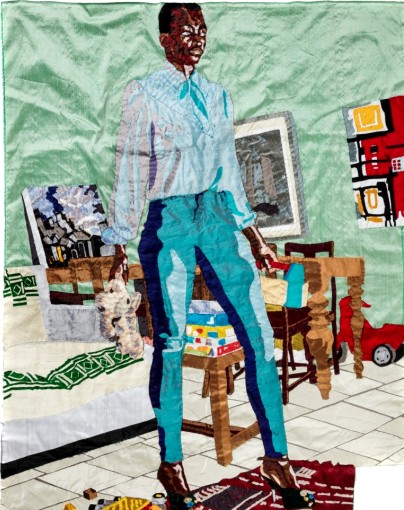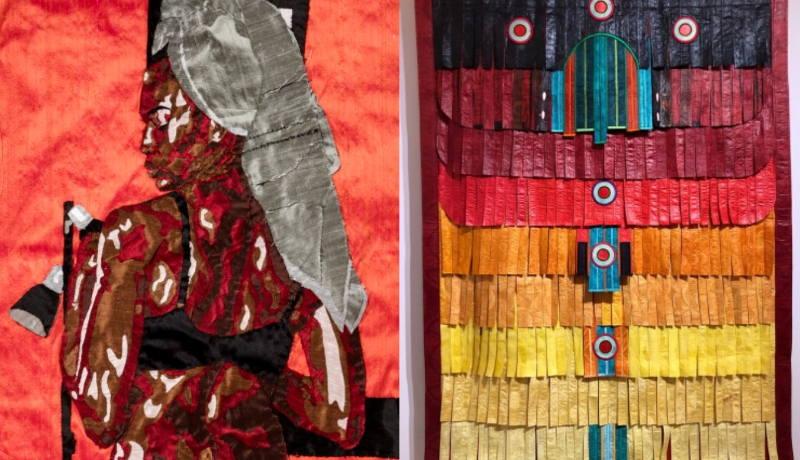The body of contemporary African textile art keeps expanding in fascinating and excitingly diverse ways.
Contemporary African artists are reinventing the traditional and the ancient in unexpected and creative ways by utilizing textiles and/or found materials.

The majority of techniques demand persistent, direct interaction with the materials, and the process itself becomes an integral component of the work and the meaning. Ibrahim Mahama’s artwork, which is depicted in the image above, is a prime example. To further emphasize and highlight numerous challenges facing both his home country of Ghana and the continent at large, he employs hessian sacks displaying signs of coal and cocoa extraction from his native country. These provocative pieces highlight the part that Africa plays in the movement of people and the exchange of goods.
Contemporary Textile Artist
Billy Zangewa and Abdoulaye Konate are two amongst a variety of artists that are popular in this region.
Billy Zangewa
Billy Zangewa, who was born in Malawi and was raised in Botswana, studied at Grahamstown, South Africa, and now lives and works there.
She received her initial training in printing and graphic design, and in 2004 her triptych of handbags won the Absa L’atelier Gerard Sekoto Award. She started creating the distinctive, exquisitely colorful, and textured Dupion silk collages that are now recognized as her hallmark artwork after falling completely in love with silk squares that were given to her by a friend.

Her complex self-portraits that are hand-stitched and meticulously applied challenge the commodification and stereotypes of the black female body. The strength of her message is concealed by the soft, silky materials.

Planning and preparation are crucial to her approach; the drawing step is crucial because it supports the cutting and arranging of fabric layers. The visuals and the narrative are developed by contrasting and offsetting large blank parts with texture and detail.
Although seemingly straightforward, each piece can take up to three months to finish.
Her works are characterized by the shape’s irregularity, which alerts the observer that it is not a painting.
Abdoulaye Konate
Mali Abdoulaye Konate, who was born in Dire in 1953, now resides and works in Bamako despite receiving praise from all over the world for his work. His textile sculptures provide an endless source of artistic and spiritual expression for this artist, who is fiercely dedicated to his own culture.

Konate uses bazin, a native Malian fabric that he shreds into strips and paints with pigments. He overlays and superimposes these strips into large-scale abstract or figurative paintings, experimenting with dimension, depth, and color.

He uses these cloths to identify signs and symbols (amulets) of covert Malian communities as well as his own interpretations of global events and references his own cultural background. His colors might have aesthetic or symbolic undertones; they can be frivolous or have quite nuanced gradations of tone and texture.
He created the “Clothes of Heaven” textile collection for an exhibition in Morocco in 2017. The stunning and impactful outcomes speak for themselves, incorporating designs, symbols, and colors that reflect the relationship he investigated between Fez artisans and traditional Moroccan textiles.

Although painting was Konate’s first artistic medium, after winning the Leopold Sedar Senghor Prize at the Dak’Art Biennale in 1996, he grew passionate about using fabric as his preferred media.
His early works, like the cloth pictured above, were frequently figurative and appliqued utilizing a range of colored and patterned textiles in relief on a white backdrop. The 2013 series Generation Biometrique, which focuses on the plight and circumstances of African migrants entering the EU and America, takes its name from the generalized government techniques of processing immigrants.











